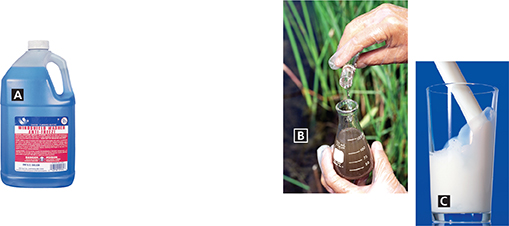Figure 6 The liquids shown represent three categories of mixtures. A Windshield wiper fluid is a solution. B Muddy water collected from a swamp is a suspension. C Milk is a colloid.
Comparing and Contrasting Based on appearance, how are a solution and a colloid similar?

Liquid solutions are easy to recognize. They do not separate into distinct layers over time. If you pour a liquid solution through a filter, none of the substances in the solution are trapped in the filter. You can see through solutions that are liquids because light passes through them without being scattered in all directions. These three properties of liquid solutions can be traced to the size of the particles in a solution. The particles in a solution are too small to settle out of the solution, be trapped by a filter, or scatter light.
Suspensions
Have you ever seen the instruction “Shake well before using” on a bottle? This instruction is a clue that the material in the bottle is a suspension. A suspension is a heterogeneous mixture that separates into layers over time. For example, if you shake up a container of sand and water, the sand mixes with the water and forms a suspension. Over time, the suspended particles of sand settle to the bottom of the container.
You could use a filter to separate the sand from the water. The water would pass through the filter, but the sand would remain in the filter paper. Suspended particles settle out of a mixture or are trapped by a filter because they are larger than the particles in a solution. The worker in Figure 7 is using a mask to filter out particles of plastic foam that are suspended in air. Because larger particles can scatter light in all directions, suspensions are cloudy.

What happens to suspended particles over time?
Figure 7 When a surfboard is sanded, particles of plastic become suspended in air. The worker wears a mask to keep from breathing in the particles.





